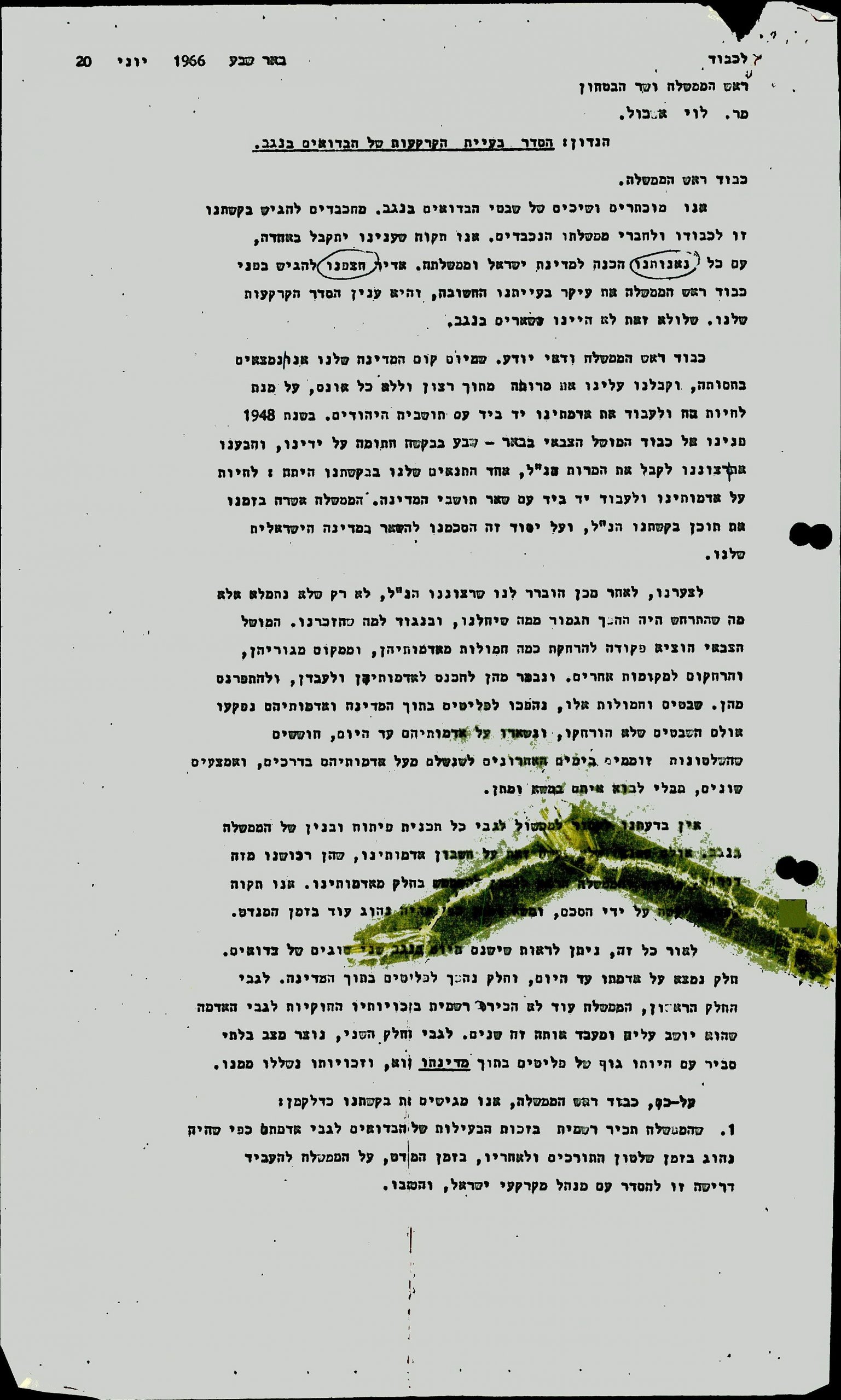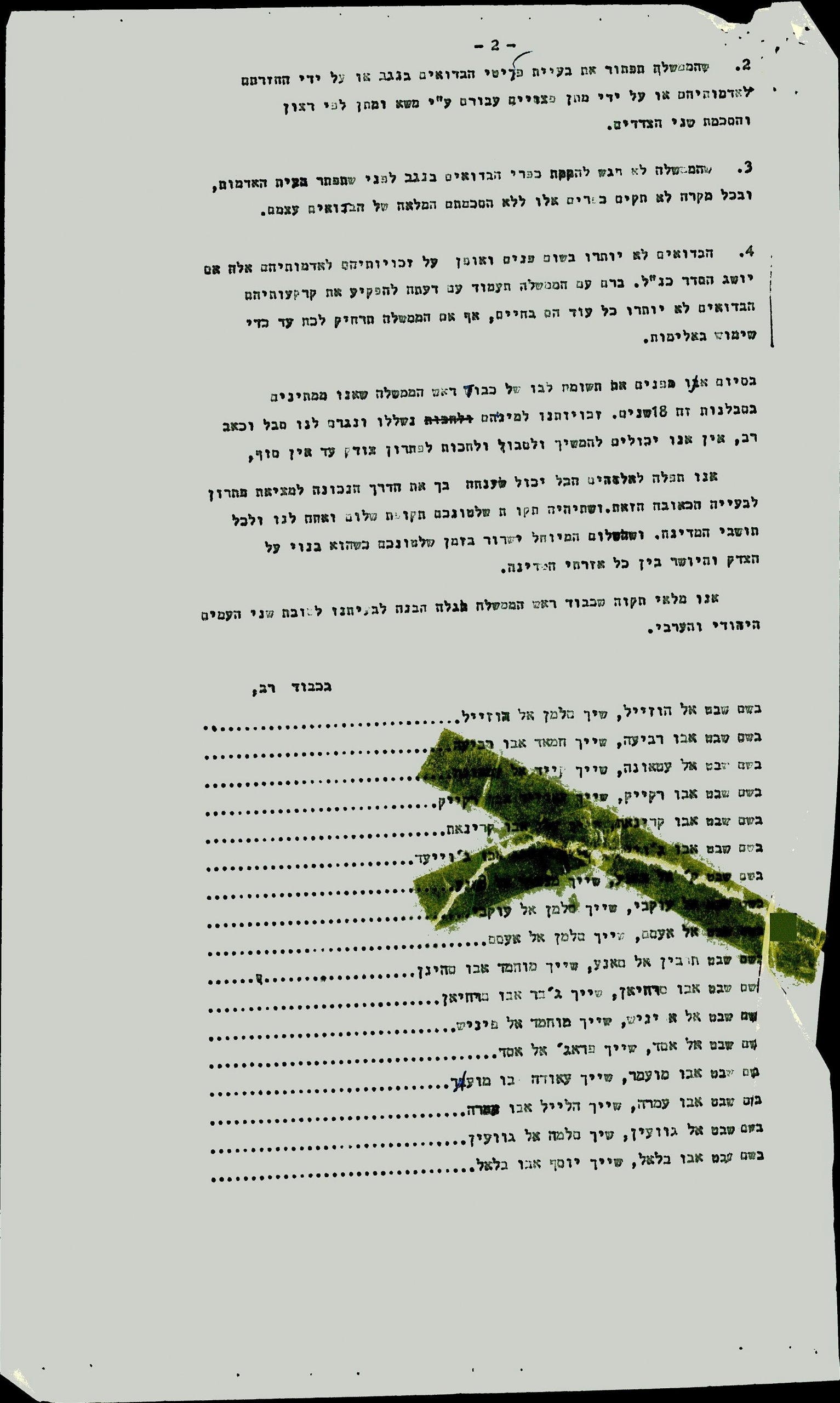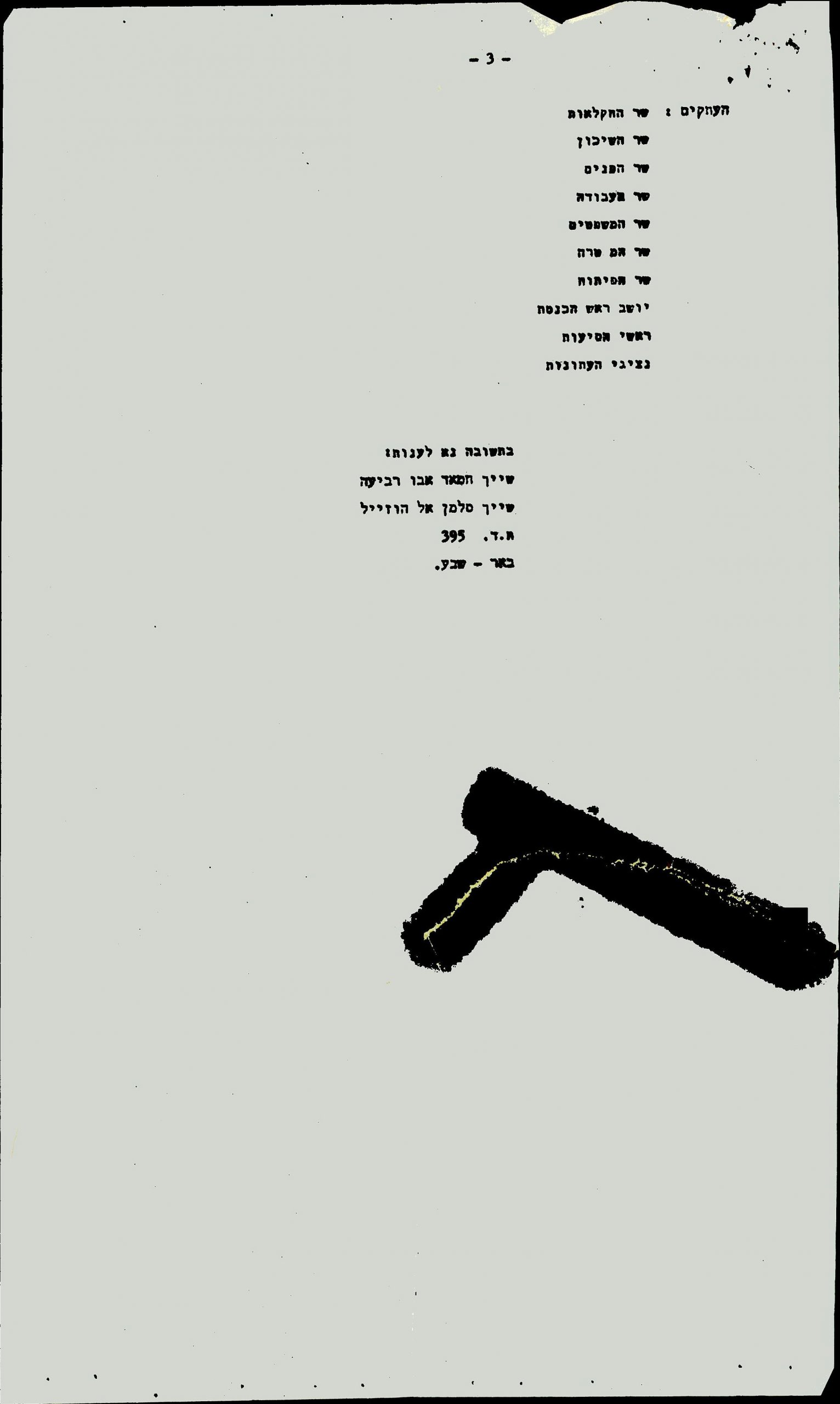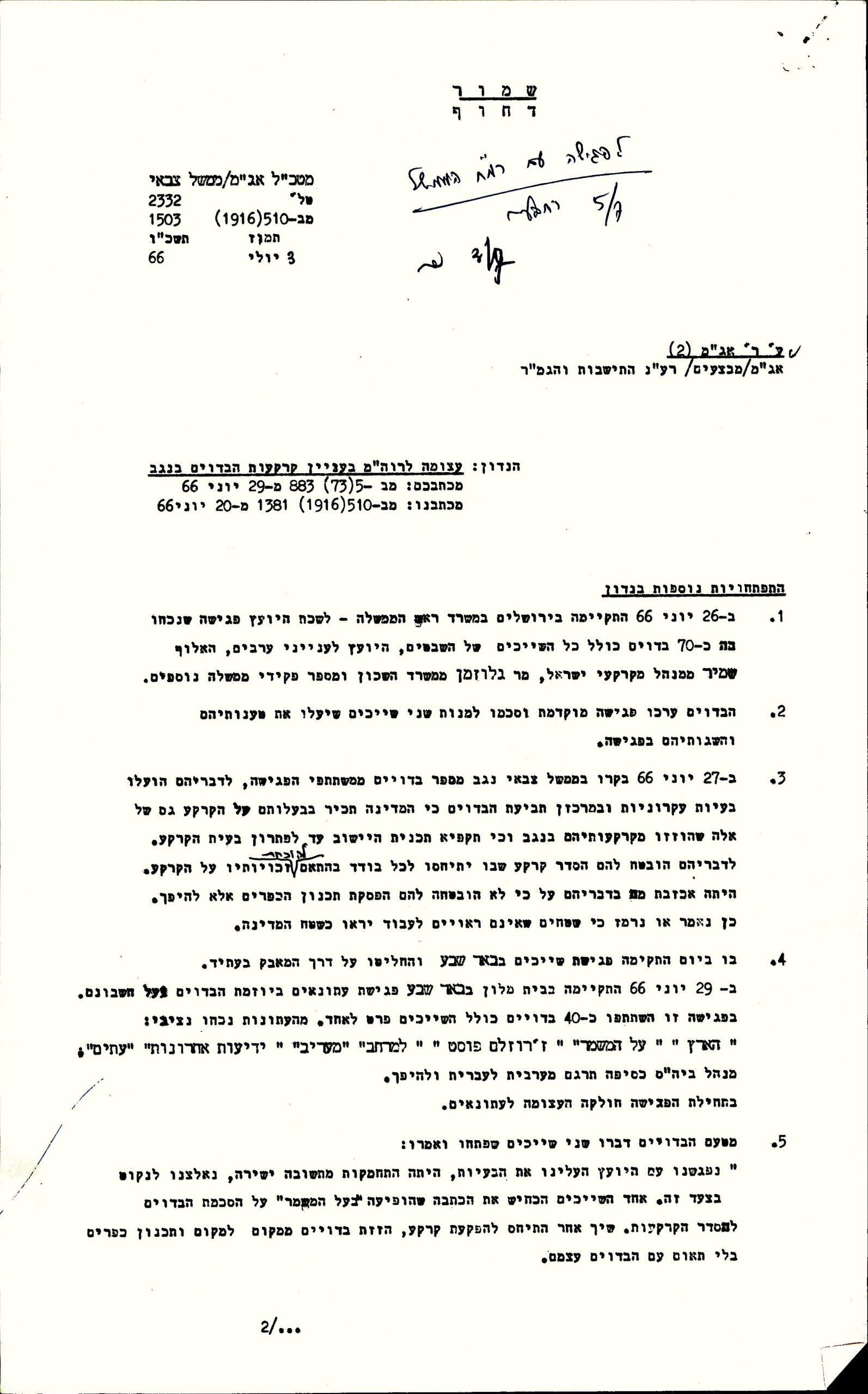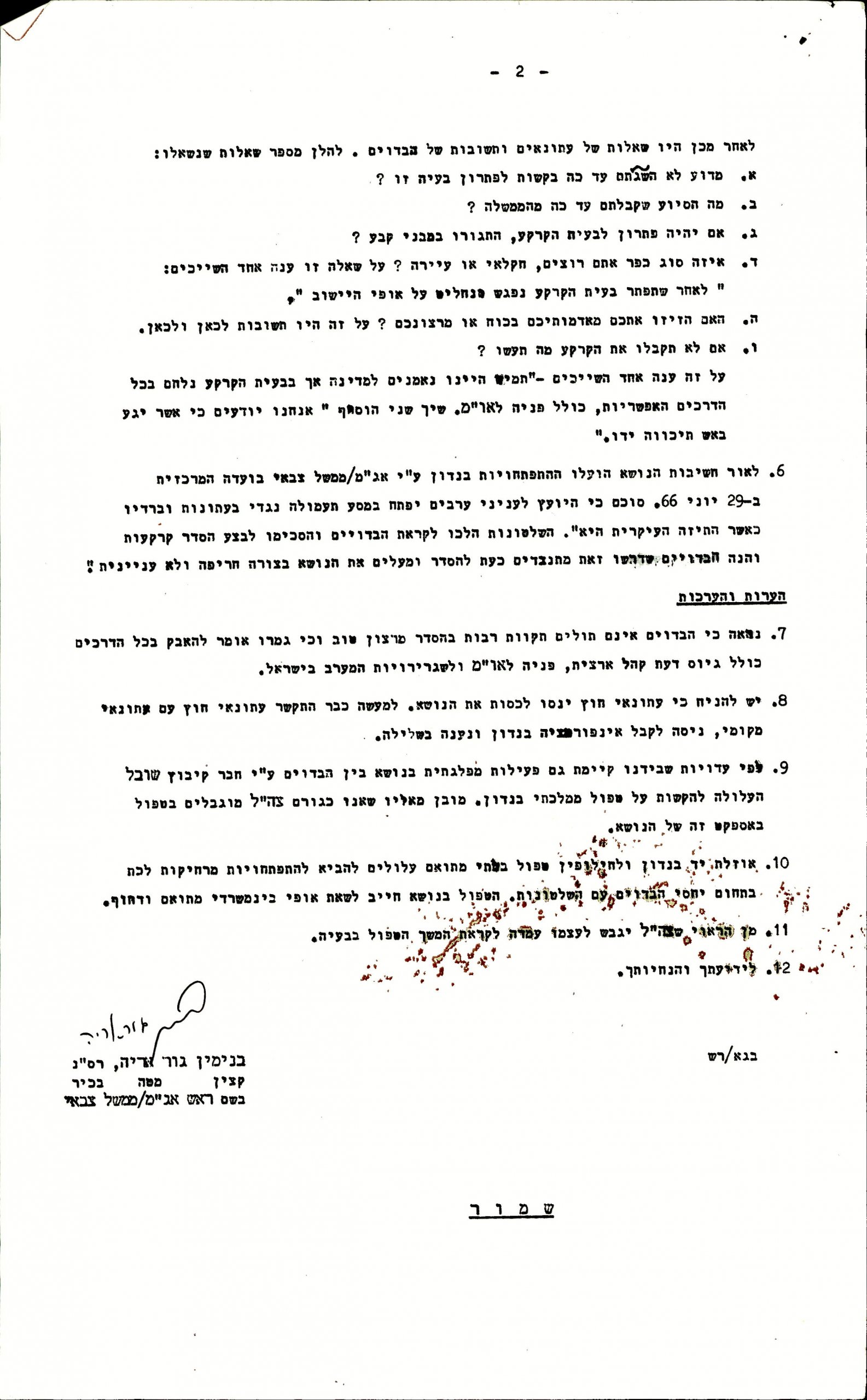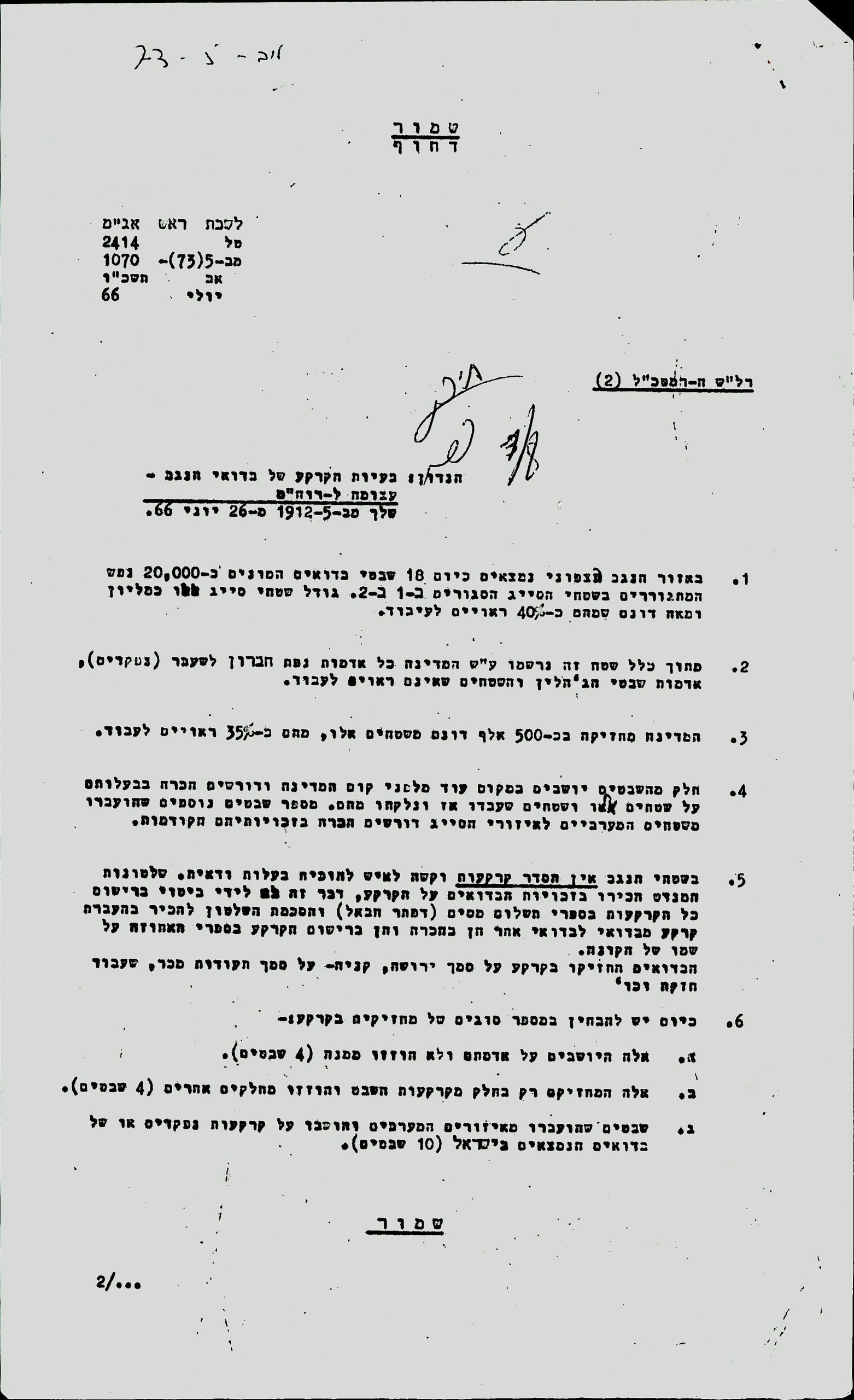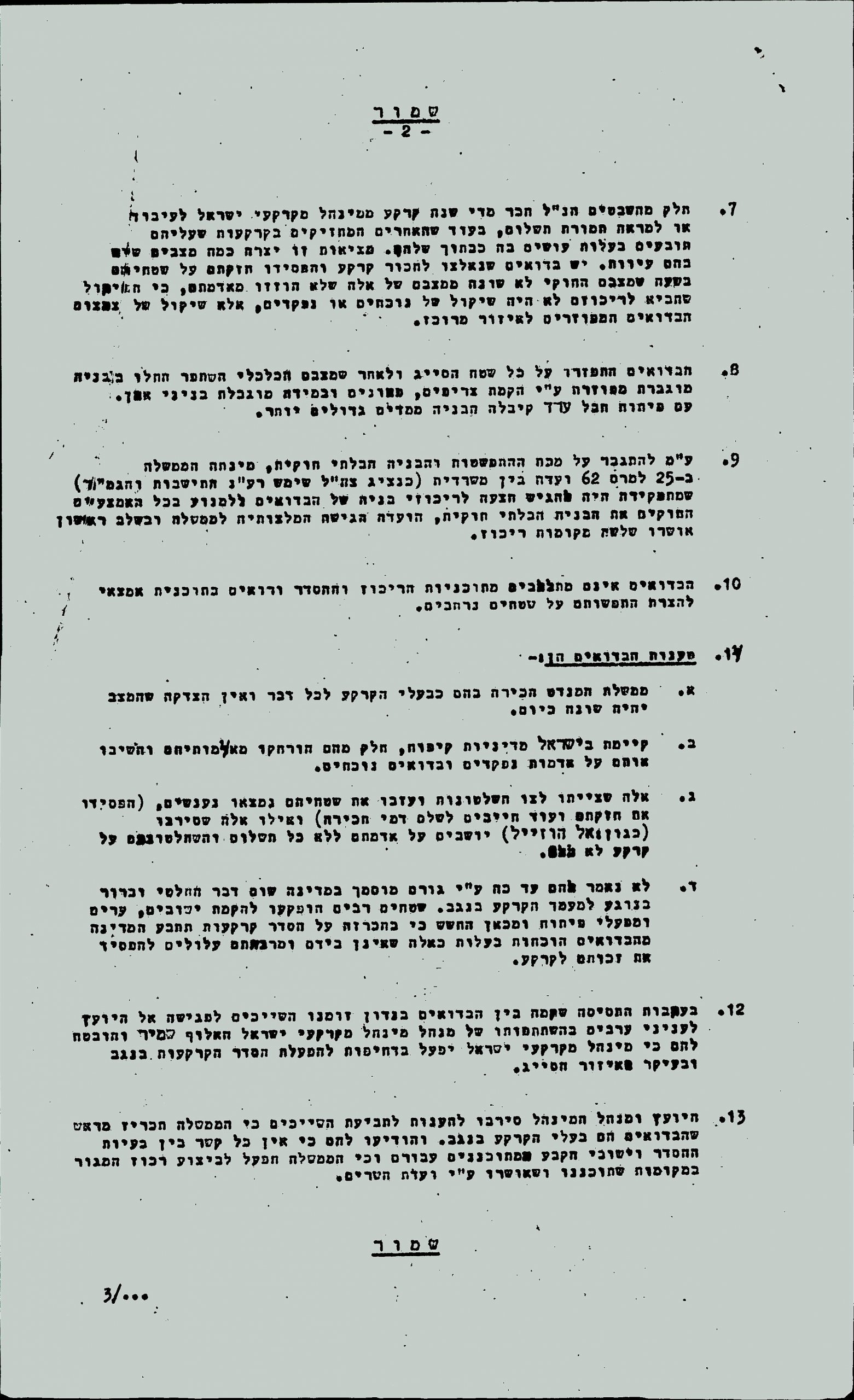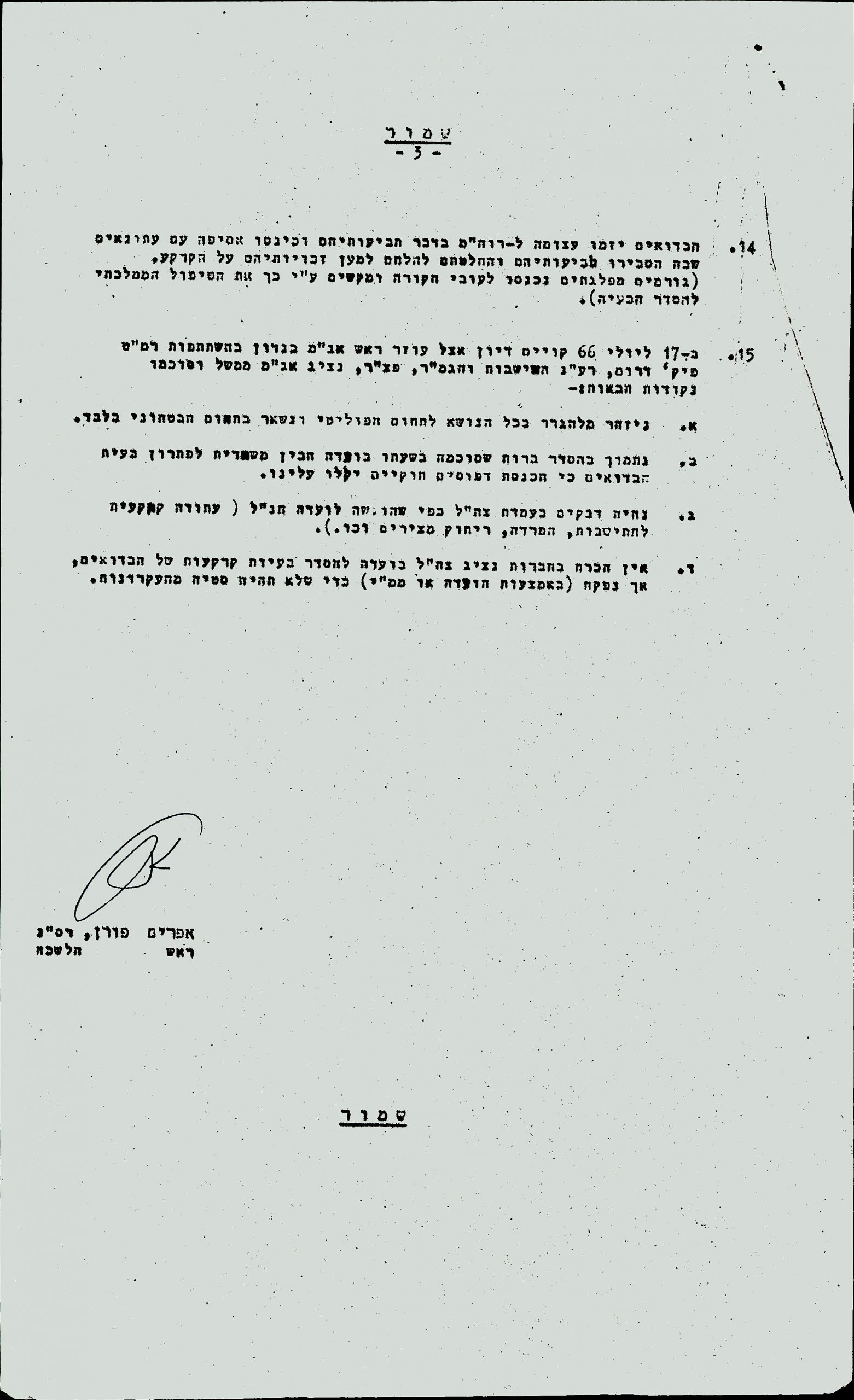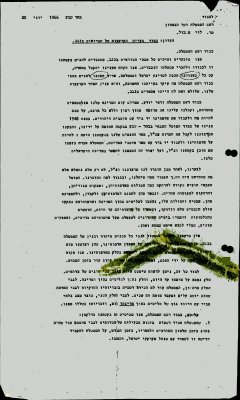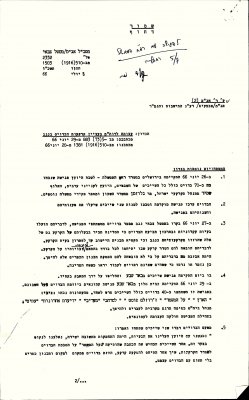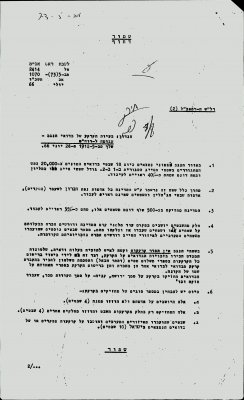After the war ended in 1949, Israel began to settle lands in the Negev, ostensibly to determine and register property titles to the lands located in the area. In practice, the process resulted in vast areas declared state land. In 1966, representatives of 17 Bedouin tribes submitted a petition to Prime Minister Levi Eshkol: “We have been waiting patiently for 18 years. Our rights have been denied, and we have endured much pain and suffering. We cannot continue to suffer as we endlessly wait for a just solution.”
In June 1966, the leaders of 17 Bedouin tribes presented Prime Minister Levi Eshkol with a petition entitled: Settling Bedouins’ Land Issues in the Negev. Roughly 20,000 Bedouins from 18 different tribes lived in the Negev at the time under strict control and monitoring by the Military Rule. In the early years of Israeli statehood, members of the Bedouin community were concentrated and required to remain within a 1.1 million dunam area known as the Siyag, in the northern Negev. All but four of the tribes, those already living in the Siyag area, were displaced by military order.
The petition was sent in connection to settlement of title proceedings initiated by the state in the Negev in the years following the war and designed to determine and register land ownership. These proceedings usually resulted in vast tracts of land being registered as state land, undermining Bedouins’ title to the lands on which they lived. Settlement of title, as pursued by Israel, included strict proof of ownership requirements, and Bedouin citizens were often unable or had difficulty proving land ownership according to the standards set by Israeli law and jurisprudence. This marked a break from practice under the Turkish Empire and British Mandate, both of which recognized Bedouins’ title to their lands.
The authors of the petition wrote: “Two classes of Bedouins can be observed. Some remain on their land to this day, and some have become refugees inside the country.” Settlement and registration of title were rarely pursued with Bedouins – of either class – as the state was planning to take over lands in the Negev.
A host of laws and court rulings resulted in a situation whereby in 1966 – the year the petition was sent – about half a million dunams of land within the Siyag was state owned. Bedouin delegates went on to demand the government recognize their title to land on which they had lived for generations, return internally displaced Bedouins to their original lands (or provide compensation inasmuch as Bedouins agree to it in negotiations), and abandon its efforts to build villages for the Bedouin public without their consent (which later turned into towns). “We have been waiting patiently for 18 years,” the tribe leaders wrote. “Our rights have been denied, and we have endured much pain and suffering […] We are hopeful that the Honorable Prime Minister will show understanding for our plight, for the good of both nations – Jewish and Arab.”
A month later, the Prime Minister’s Office hosted a meeting with representatives from each Bedouin tribe. After the meeting, Binyamin Gur Aryeh, a staff officer with the Military Rule, wrote on behalf of the head of the Military Rule’s Operations Directorate that “it appears that the Bedouins are not pinning too much hope on a goodwill arrangement.” However, the “goodwill” mentioned by the official meant the dispossession of many Bedouins of lands they had occupied for decades.
The dispute between the Bedouin community and the state over settlement outside areas recognized by the state persists to this day. Few Bedouins have received state recognition of their title to land in the past several decades.

